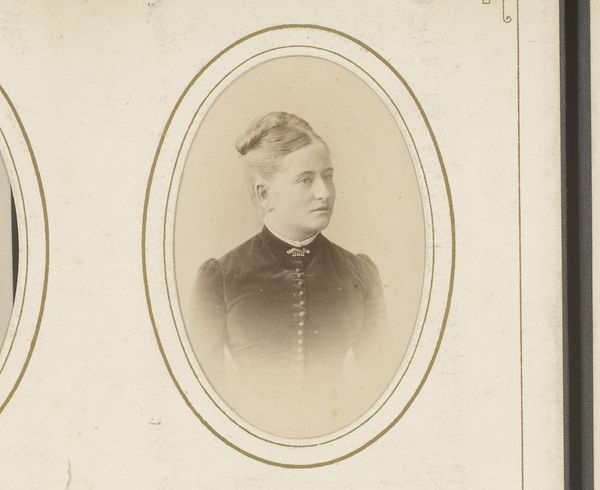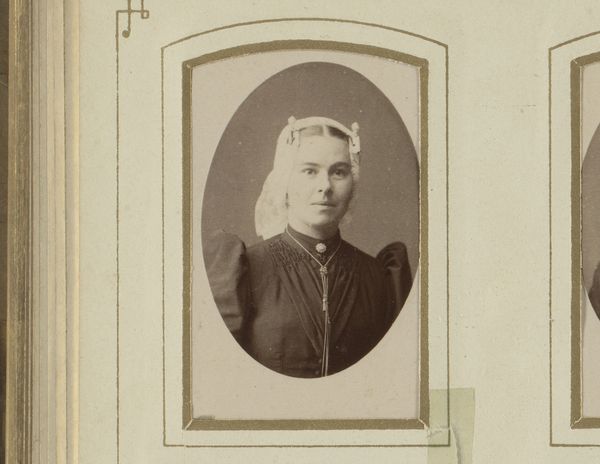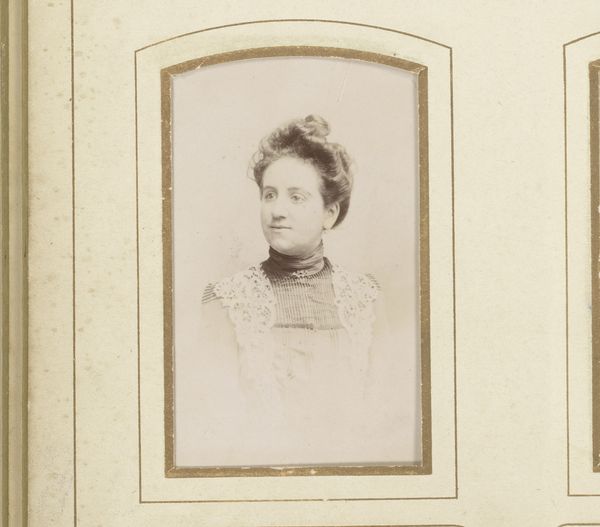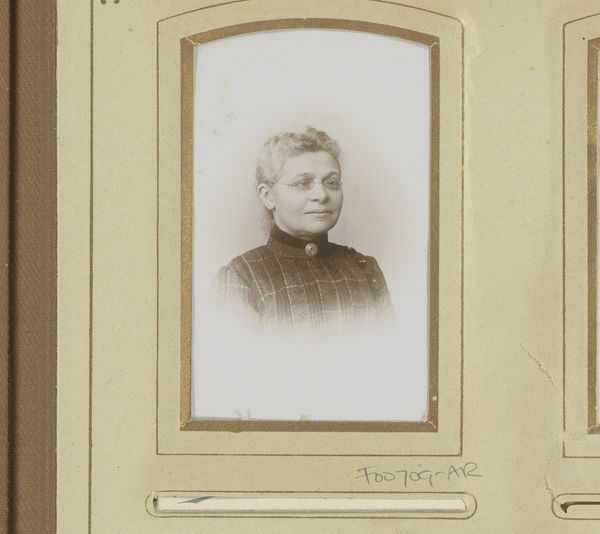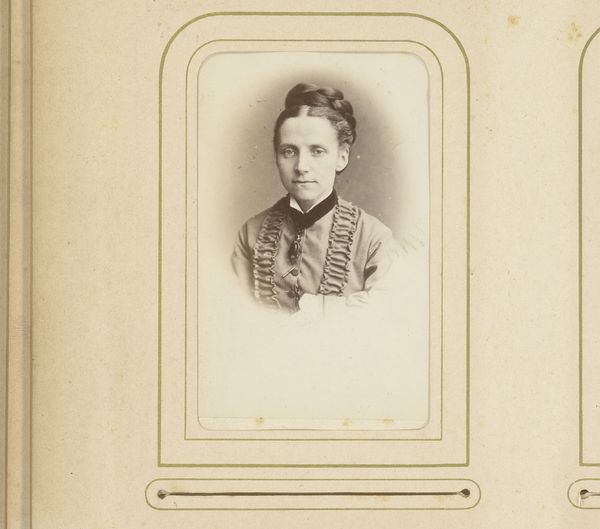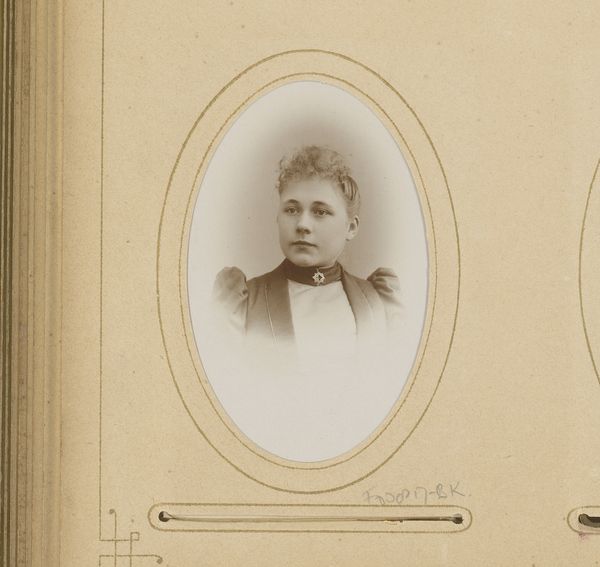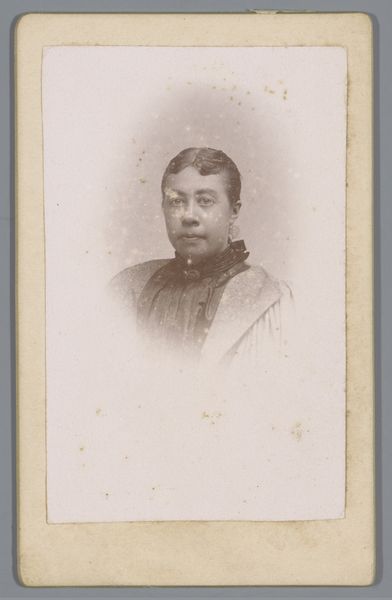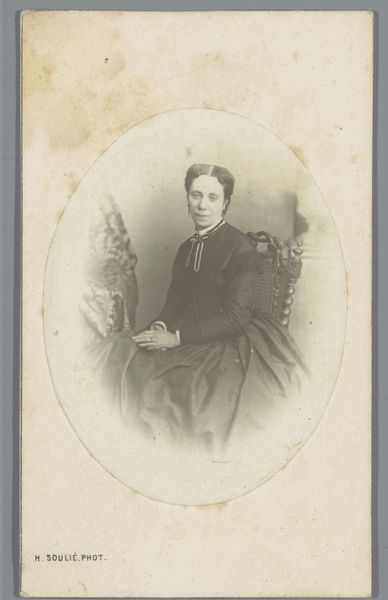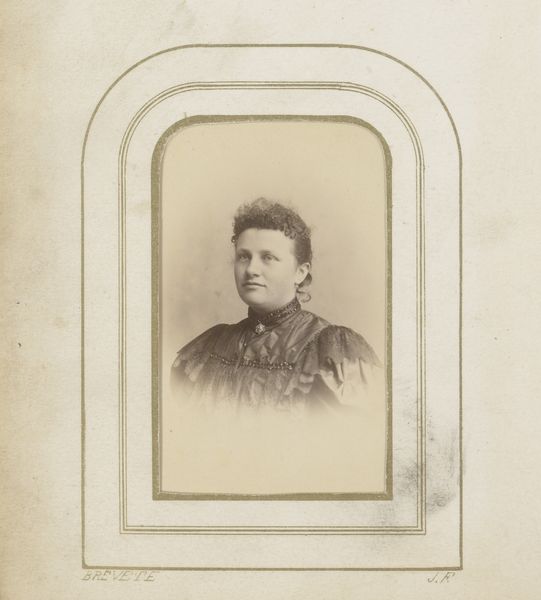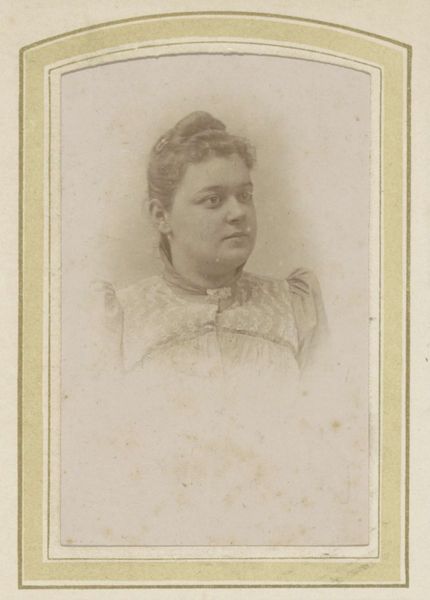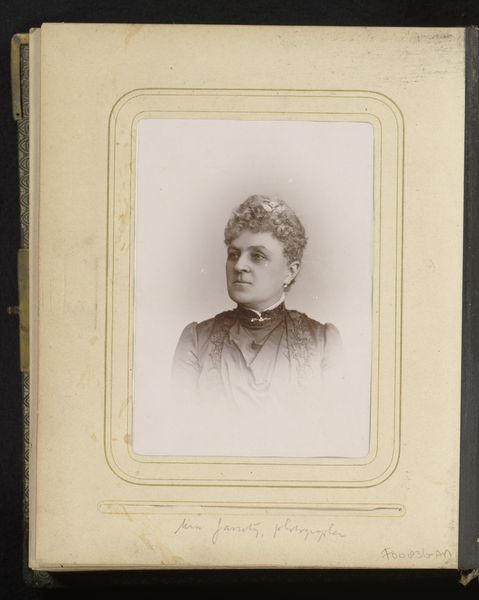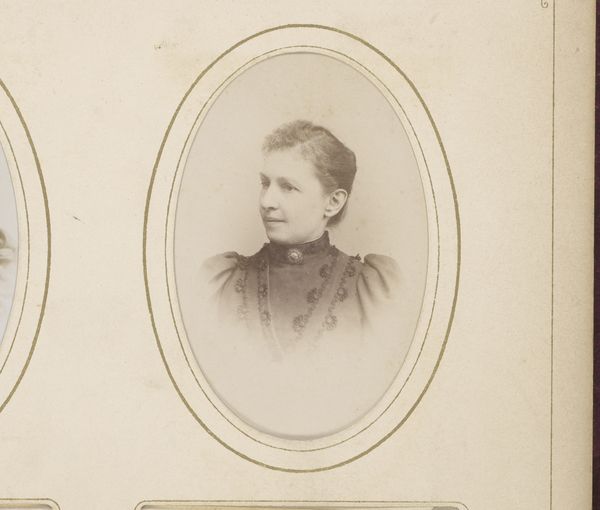
photography
#
portrait
#
pictorialism
#
photography
#
historical photography
#
19th century
Dimensions: height 165 mm, width 106 mm
Copyright: Rijks Museum: Open Domain
Curator: Before us we have a photographic portrait of Wilhelmina Buys-Mossel, created by Paul Ferdinand Götte sometime between 1899 and 1904. Editor: The composition is so soft, almost dreamlike. It lacks crisp detail, fading into what looks like a vignette around the sitter. What medium was employed here? Curator: This is photography. But not as straightforward as we might assume today. Götte, aligning himself with the Pictorialist movement, would manipulate his negatives and prints to resemble painting or etching. Editor: I can see that—the diffusion of light is quite remarkable! The tonal range feels compressed, which further enhances the artwork’s gentle quality. Note how her gaze directs us slightly out of frame, encouraging curiosity rather than direct engagement. Curator: Absolutely. Pictorialism, more broadly, reflected an anxiety amongst photographers keen to have their art legitimized, to be taken as seriously as painting and sculpture. The use of soft focus and hand manipulation were meant to signal artistic intention and differentiate the photographic arts from mere documentation. Editor: In doing so, doesn't it ironically deny photography's inherent strengths: the immediacy, detail, and clarity which distinguish it? This, to me, appears to veil rather than reveal something about the sitter. Curator: That tension, that reaching for art status, is crucial. This portrait aesthetic speaks volumes about artistic and social hierarchies at the turn of the century. It shows the subtle maneuvering that photographs and photographic processes were making at the time within a much broader field. Editor: It really is something of a statement piece, I see. Curator: I agree. And a wonderful record of both its sitter and its specific cultural and historical moment. Editor: Looking at it once more, it is evocative in a way I would not have initially thought. The image makes a case for itself despite the flaws, I suppose.
Comments
No comments
Be the first to comment and join the conversation on the ultimate creative platform.
